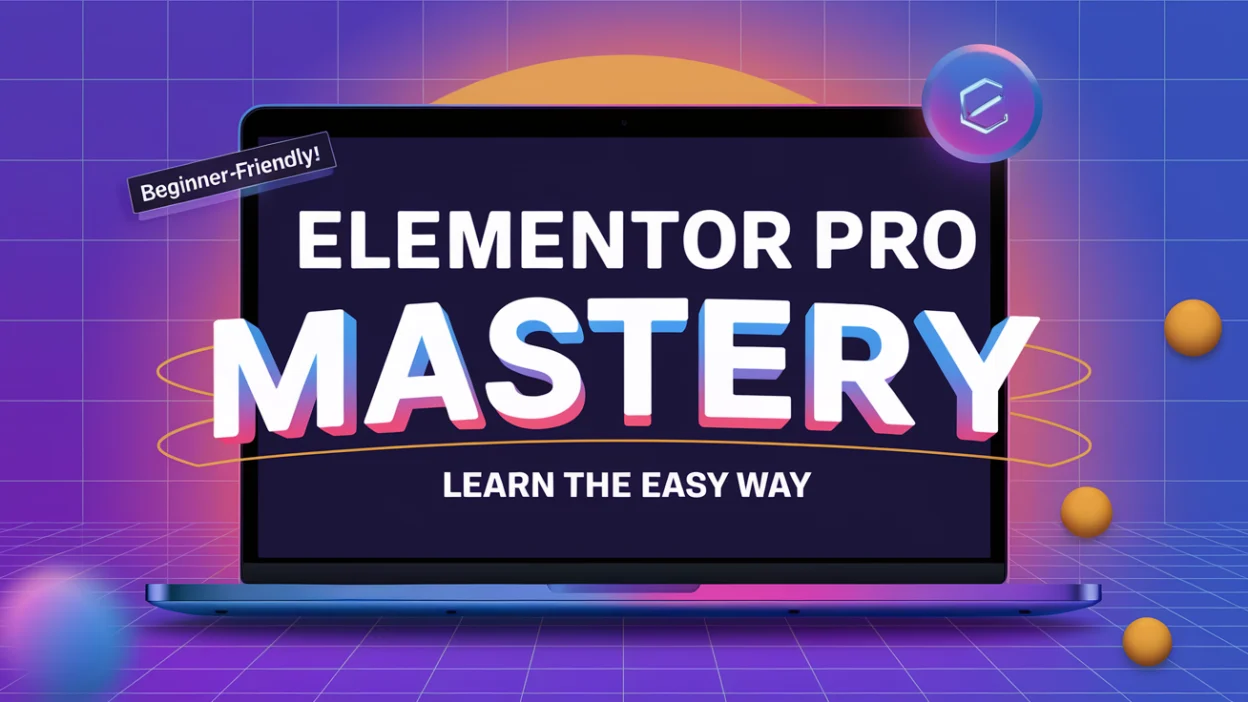Are you ready to take your website design skills to the next level? Learning Elementor Pro can be a game-changer for small business owners, bloggers, and web designers alike. This powerful WordPress page builder allows you to create stunning, professional websites without needing to write a single line of code. In this guide, we’ll walk you through everything you need to know to learn Elementor Pro effectively, from the basics to advanced techniques.
Whether you’re a beginner or looking to refine your skills, this step-by-step guide will help you master Elementor Pro and create websites that stand out in today’s competitive digital landscape. Let’s dive in!
Why Learn Elementor Pro?
Before we get into the nitty-gritty of how to learn Elementor Pro, let’s talk about why it’s worth your time. Elementor Pro is one of the most popular drag-and-drop page builders for WordPress, and for good reason:

- Ease of Use: Its intuitive interface makes it easy for beginners to create professional designs.
- Customization: With hundreds of templates and widgets, you can customize every aspect of your website.
- Time-Saving: Pre-designed templates and blocks allow you to build websites faster.
- Cost-Effective: Instead of hiring a developer, you can create and manage your website yourself.
By learning Elementor Pro, you’ll gain the skills to build visually appealing, functional websites that drive traffic and conversions.
Getting Started with Elementor Pro
1. Install and Set Up Elementor Pro
To start your journey to learn Elementor Pro, you’ll first need to install it on your WordPress website. Here’s how:
- Purchase Elementor Pro from the official website.
- Download the plugin and upload it to your WordPress dashboard.
- Activate the plugin and enter your license key.
- Familiarize yourself with the Elementor dashboard and settings.
2. Explore the Interface
Once installed, take some time to explore the Elementor Pro interface. Key features include:
- Drag-and-Drop Editor: Easily add and arrange elements on your page.
- Template Library: Access hundreds of pre-designed templates.
- Widgets: Use advanced widgets like forms, sliders, and galleries.
3. Start with a Template
If you’re new to Elementor Pro, using a template is a great way to learn Elementor Pro quickly. Choose a template that matches your website’s purpose, and customize it to suit your needs.
Advanced Tips to Master Elementor Pro
1. Learn Keyboard Shortcuts
Elementor Pro offers several keyboard shortcuts to speed up your workflow. For example:
- Ctrl + Z: Undo
- Ctrl + Shift + C: Copy styles
- Ctrl + Shift + V: Paste styles
2. Use Global Colors and Fonts
Consistency is key in web design. Elementor Pro allows you to set global colors and fonts, ensuring your website has a cohesive look.
3. Experiment with Custom CSS
For more advanced customization, you can add custom CSS to individual elements. This is a great way to learn Elementor Pro while adding unique touches to your design.
Common Mistakes to Avoid When Learning Elementor Pro
- Overloading Pages with Widgets: Too many widgets can slow down your website. Focus on simplicity and functionality.
- Ignoring Mobile Responsiveness: Always preview your design on different devices to ensure it looks great everywhere.
- Skipping Updates: Keep Elementor Pro and WordPress updated to avoid compatibility issues.
How to Optimize Your Website with Elementor Pro
1. Improve Page Speed
Page speed is a critical factor for SEO and user experience. Here’s how to optimize your Elementor Pro website for speed:
- Compress images before uploading.
- Use a caching plugin like WP Rocket.
- Minimize the use of heavy widgets and animations.
2. Leverage SEO Tools
Elementor Pro integrates seamlessly with popular SEO plugins like Yoast SEO and Rank Math. Use these tools to optimize your content for search engines.
3. Create Engaging CTAs
A well-designed call-to-action (CTA) can significantly improve your conversion rates. Use Elementor Pro’s widgets to create eye-catching CTAs that encourage users to take action.
Real-Life Examples of Websites Built with Elementor Pro
To inspire you as you learn Elementor Pro, here are some real-life examples of stunning websites built with this tool:
- Portfolio Websites: Showcase your work with a clean, modern design.
- E-Commerce Stores: Create a seamless shopping experience with WooCommerce integration.
- Blogs: Design a visually appealing blog that keeps readers engaged.
Resources to Help You Learn Elementor Pro
1. Official Elementor Tutorials
The Elementor website offers a wealth of tutorials and documentation to help you learn Elementor Pro. These resources are perfect for beginners and advanced users alike.
2. YouTube Channels
Many web design experts share free tutorials on YouTube. Channels like Elementor and WPCrafter are great places to start.
3. Online Courses
If you prefer structured learning, consider enrolling in an online course. Platforms like Udemy and Skillshare offer comprehensive courses on Elementor Pro.
Conclusion
Learning Elementor Pro is an invaluable skill for anyone looking to create stunning, functional websites. By following this step-by-step guide, you’ll be well on your way to mastering Elementor Pro and unlocking its full potential.
From installing the plugin to exploring advanced features, this guide has covered everything you need to know to learn Elementor Pro effectively. Remember, practice makes perfect—so don’t hesitate to experiment and try new things as you build your website.
Ready to get started? Dive into Elementor Pro today and transform your website-building experience. Don’t forget to leave a comment below if you have any questions or share this post with others who want to learn Elementor Pro!



